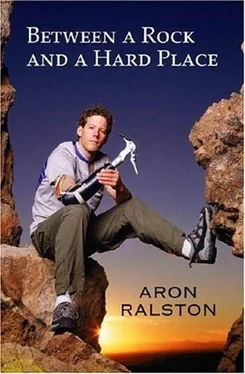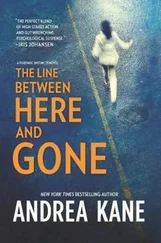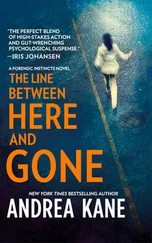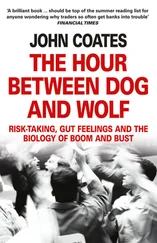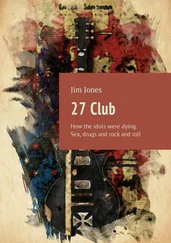It’s nearing ten-thirty A.M. as I pedal into the shade of a very lonesome juniper and survey my sunbaked surroundings. The rolling scrub desert gradually drops away into a region of painted rock domes, hidden cliffs, weathered and warped bluffs, tilted and tortured canyons, and broken monoliths. This is hoodoo country; this is voodoo country. This is Abbey’s country, the red wasteland beyond the end of the roads. Since I arrived after dark last night, I wasn’t able to see much of the landscape on my drive in to the trailhead. As I scan the middle ground to the east for any sign of my destination canyon, I take out my chocolate muffin from the Moab grocery’s bakery and have to practically choke it down; both the muffin and my mouth have dried out from exposure to the arid wind. There are copious signs of meandering cattle from a rancher’s ongoing attempt to make his living against the odds of the desert. The herds trample sinuous tracks through the indigenous life that spreads out in the ample space: a lace of grasses, foot-tall hedgehog cacti, and black microbiotic crust cloak the red earth. I wash down the rest of the muffin, except for a few crumbs in the wrapper, with several pulls from the CamelBak’s hydration tube fastened to my shoulder strap.
Remounting, I roll down the road in the wind-protected lee of the ridgeline in front of me, but at the top of the next hill, I’m thrust into battle against the gusts once more. After another twenty minutes pistoning my legs along this blast furnace of a road, I see a group of motorbikers passing me on their way to the Maze District of Canyonlands. The dust from the motorbikes blows straight into my face, clogging my nose, my eyes, my tear ducts, even gluing itself to my teeth. I grimace at the grit pasted on my lips, lick my teeth clean, and press on, thinking about where those bikers would be headed.
I’ve visited the Maze only once myself, for about half an hour, nearly ten years ago. When our Cataract Canyon rafting party pulled over in the afternoon to set up camp along the Colorado River at a beach called Spanish Bottom, I hiked a thousand feet up over the rim rock into a place known as the Doll’s House. Fifty-to-one-hundred-foot-tall hoodoo rock formations towered above me as I scrambled around the sandstone and granite like a Lilliputian. When I finally turned around to look back at the river, I jerked to a halt and sat on the nearest boulder with a view. It was the first time the features and formative processes of the desert had made me pause and absorb just how small and brave we are, we the human race.
Down behind the boats at Spanish Bottom, a furious river churned; suddenly, I perceived in its auburn flow that it was, even at that exact moment, carving that very canyon from a thousand square miles of desert tablelands. From the Doll’s House, I had the unexpected impression that I was watching the ongoing birth of an entire landscape, as if I were standing on the rim of an exploding caldera. The vista held for me a feeling of the dawn of time, that primordial epoch before life when there was only desolate land. Like looking through a telescope into the Milky Way and wondering if we’re alone in the universe, it made me realize with the glaring clarity of desert light how scarce and delicate life is, how insignificant we are when compared with the forces of nature and the dimensions of space. Were my group to board those two rafts a mile in the distance and depart, I would be as cut off from human contact as a person could be. In fifteen to thirty days’ time, I would starve in a lonely death as I hiked the meanders back upriver to Moab, never again to see the sign or skin of another human. Yet beyond the paucity and the solitude of the surrounding desert, it was an exultant thought that peeled back the veneer of our self-important delusions. We are not grand because we are at the top of the food chain or because we can alter our environment-the environment will outlast us with its unfathomable forces and unyielding powers. But rather than be bound and defeated by our insignificance, we are bold because we exercise our will anyway, despite the ephemeral and delicate presence we have in this desert, on this planet, in this universe. I sat for another ten minutes, then, with my perspective as widened as the view from that bluff, I returned to camp and made extra-short work of dinner.
Riding down the road past the metal culvert that marks the dried-up source of the West Fork of Blue John Canyon, I pass through a signed intersection where a branch of the dirt road splits off toward Hanksville, a small town an hour to the west at the gateway to Capitol Reef National Park. Hanksville is the closest settlement to the Robbers Roost and the Maze District, and home to the nearest landline public telephone in the region. Just a half mile farther, I pass a slanting grassy plain that was an airstrip until whatever minor catastrophe forced whoever was flying there to head back to more tenable ground. It’s an indication of how small planes and helicopters are typically the only efficient means of getting from here to there in this country. Some of the time, though, it’s not financially worth leaving here to get there, even if you can fly. Better just to stay at home.
The Mormons gave their best efforts to transect this part of the country with road grades, but they, too, retreated to the established towns of Green River and Moab. Today most of those Mormon trails have been abandoned and replaced by still barely passable roads whose access by vehicle is, ironically, more sparse than it was by horse or wagon a hundred years ago. Last night I drove fifty-seven miles down the only dirt road in the eastern half of two counties to arrive at my embarkation point-it was two and a half hours of washboard driving during which I didn’t pass a single light or a house. Frontier ranchers, rustlers, uranium miners, and oil drillers each left a mark on this land but have folded their hands in deference to the stacked deck of desert livelihood.
Those seekers of prosperity weren’t the first to cross the threshold into this country, only to abandon the region as a barren wasteland: Progressive waves of ancient communities came into being and vanished over the ages in the area’s canyon bottoms. Usually, it would be a significant drought or an incursion by hostile bands that made life in the high country and the deserts farther south seem more hospitable. But sometimes there are no defensible answers to explain the sudden evacuation of an entire culture from a particular place. Five thousand years ago, the people of Barrier Creek left their pictographs and petroglyphs at the Great Gallery and Alcove Gallery; then they disappeared. Since they left no written record, why they departed is both a mystery and a springboard for the imagination. Looking at their paintings and standing in their homes, gardens, and trash heaps, I feel connected to the aboriginal pioneers who inhabited these canyons so long ago.
As I grind my way out onto the open mesa, the wind slaps at my face, and I find myself already looking forward to the final hike through Horseshoe Canyon, where I will finish my tour. I can’t wait to get out of this demeaning wind.
To judge from what I’ve seen on my ride, there are few significant differences in this area between Blue John Griffith’s day and the present. The Bureau of Land Management (BLM) has graded the century-old horse trail and added scattered signposts, but even the ubiquitous fences that partition the rest of the West are noticeably absent. Perhaps it’s the lack of barbed wire that makes this place feel so terrifically remote. I spend a lot of time in out-of-the-way areas-two or three days a week in designated wildernesses, even through the winter-but most of them don’t feel half as isolated as this back road. As I consider this, abruptly, my solitude changes to loneliness and seems somehow more tenacious. While the region’s towns may have simmered since those raucous days when the Robbers Roost was earning its name, the outlying desert is still just as wild.
Читать дальше
